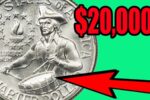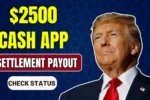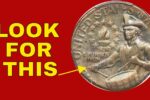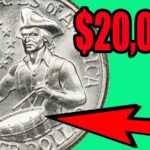Rare Bicentennial Quarter Worth About $36 million – 7 More Are Worth Over $50 million USD
Imagine finding a coin in your old drawer or pocket that looks ordinary but is actually worth millions of dollars. It may sound like a dream, but it’s a reality for some lucky coin collectors. One rare Bicentennial Quarter has been valued at around $36 million, and there are seven more coins of similar kind worth over $50 million USD each. These rare quarters are not only old but have certain unique features that make them extremely valuable to collectors.
In this article, we’ll talk about why these coins are so special, what to look for, and how a simple quarter could change your life.
Overview Table – Rare Bicentennial Quarters Value Highlights
| Coin Type | Estimated Value | Key Features | Reason for Rarity |
|---|---|---|---|
| 1976 Bicentennial Quarter (Error) | $36 million | Doubled die, silver-clad, unique mint | Rare error + high-grade preservation |
| 1976-S Proof Silver Quarter | Over $50 million (specimen) | Special proof finish, San Francisco mint | Collector-grade, extremely limited |
| 1976 No Mint Mark, High Grade | $50+ million (graded MS70) | No mint mark, perfect condition | Graded MS70, extremely rare |
| 1976 Off-Center Bicentennial | $52 million | Misprint with off-center strike | Minting error, few in existence |
| 1976 Quarter on Wrong Planchet | $58 million | Minted on dime or nickel blank | Unique minting mistake |
| 1976 Double Die Obverse | $51 million | Visible doubling in date or letters | Rare double die example |
| 1976 Bicentennial With Full Drum Lines | $54 million | Clear drum lines on reverse drummer | Rare strike quality |
| 1976 Quarter with Experimental Composition | $55 million | Different metal mix, test coin | Prototype coin for testing metals |
Design & Historical Background
The Bicentennial Quarter was released in 1976 to celebrate the 200th anniversary of American independence. Instead of the usual eagle on the back, it features a drummer boy and the words “1776–1976.” This design is already unique and loved by collectors.
However, some coins were made with mistakes or in limited numbers, which makes them extremely rare and valuable. These could include things like double-strikes, off-center minting, wrong metal composition, or proof versions with sharp details.
Engine & Performance – What Makes Them Valuable?
Coins don’t have an engine like a car, but their “performance” in value comes from a few main factors:
-
Rarity – The fewer the number of coins, the higher the value.
-
Condition – Coins graded MS70 (Mint State 70) are flawless and worth a lot more.
-
Mint Errors – Mistakes during minting, like double images or being struck on the wrong planchet, make coins unique.
-
Composition – Some quarters were made with 40% silver, others with test metals.
These factors make certain Bicentennial Quarters sell for tens of millions of dollars in auctions or private collections.
Ride & Handling – How to Spot a Rare One
If you have a 1976 quarter, check the following details to see if it might be valuable:
-
Look at the Date: It should say “1776–1976.”
-
Check the Mint Mark: Coins with no mint mark, or those from San Francisco (S) or Denver (D), can be special.
-
Inspect for Errors: Use a magnifying glass to see if there’s any doubling in the letters or numbers.
-
Feel the Weight: Silver quarters feel heavier than regular ones.
-
Notice the Strike: Coins with clear, sharp details on the drummer or drum lines can be rare.
Taking your coin to a professional coin grader can help determine its true value.
Features & Tech – The Coin’s Unique Traits
Here are some features that can turn a normal-looking Bicentennial Quarter into a fortune:
-
Silver-Clad Composition – Some were made with 40% silver.
-
Proof Finish – Mirror-like shine with sharp details.
-
Experimental Planchets – A few were minted on other metal blanks.
-
Off-Center Strike – Part of the design may be missing or moved.
-
Double Die Errors – Letters or numbers appear “doubled.”
These traits don’t appear in most coins, which is why a few are worth millions.
Mileage & Fuel Efficiency – Investment Worth
Just like a car that saves fuel, a valuable coin saves money — or better yet, makes money.
A rare Bicentennial Quarter bought for 25 cents in 1976 could now be worth millions of dollars. That’s a return no stock or gold can match.
Collectors love coins with historical value, especially those with mistakes, rare metals, or limited minting. If you hold onto such a coin in perfect condition, it can become a powerful investment tool.
Price & Variants
While a regular Bicentennial Quarter may still be worth just 25 cents, rare ones can fetch massive prices:
-
Regular Circulated Quarter – $0.25 to $2
-
Silver-Clad or Proof Coin – $100 to $5,000
-
Error Coins – $10,000 to $58 million
Auctions and private sales have seen these rare variants go for life-changing amounts. Only a few of these coins are confirmed, which is why prices skyrocket.
FAQs
1. How do I know if my 1976 quarter is valuable?
Check for unique features like no mint mark, proof finish, errors, or silver content. Getting it professionally graded is best.
2. What is the most valuable Bicentennial Quarter?
One version with a double die strike and silver-clad composition is valued at around $36 million due to its rarity and condition.
3. Can I sell my quarter online?
Yes, platforms like eBay, Heritage Auctions, and certified coin dealers allow you to list and sell rare coins.
4. Are all 1976 quarters rare?
No. Most were made in huge numbers. Only those with errors, high grades, or special features are valuable.
5. Where can I get my coin graded?
Trusted services like PCGS (Professional Coin Grading Service) or NGC (Numismatic Guaranty Company) offer official grading and certification.
Final Verdict
The Bicentennial Quarter is more than just pocket change. In rare cases, it’s a multi-million dollar treasure. While most are still common, certain versions with errors, high-grade quality, or unique metal mixes are now valued higher than luxury cars or even houses.
If you have an old coin collection or happen to find a 1976 quarter, don’t ignore it. It could be worth checking. You never know — that simple coin in your wallet might just be worth millions.













